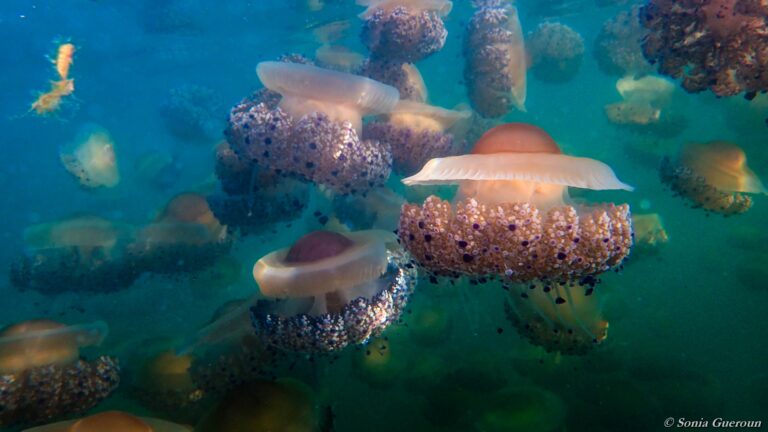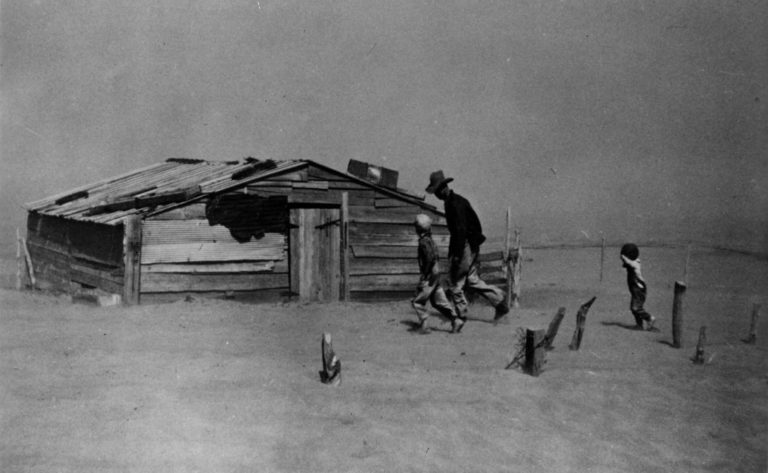Putting ‘sustainable’ in the sustainable blue economy

Photo credit: João Monteiro
The rise in sustainable, impact and ESG (Environmental, Societal and Governance)-focused investment opportunities has brought with it both hope and controversy. Hope, because for too long saving money for the future has felt inextricably tied to a single-minded, mercenary destruction of that future. Controversy, because it remains to be seen whether truly sustainable commerce can generate the growth and investment returns collectively needed for a generation’s retirement and the quality of life aspired to, or enough profits to fund the innovations necessary to reduce our dependence on fossil fuels, plastics, fertilizers, toxic chemicals and all our other ‘evils’. Further controversy emerges from trying to independently verify — or even define — sustainable practices in the first place. For the environmentally- and socially-conscientious saver, consumer, investor, entrepreneur or business manager, the rise in sustainable finance and sustainable business is like simultaneously arriving to the Promised Land…and a minefield.
A similar mood can be felt in marine research. From our lab benches, field stations and conference seats, we’re watching the rise in sustainable blue economy ventures with a lot of hope. For too long the ocean — the immense value it brings to our society, the importance of its healthy functioning to life on Earth and its constantly rising threats — has been out of sight, out of mind and very much out of pocket. Seeing a greater interest in sustainable ocean-based practices and a corresponding increase in investment is, in many ways, the answer we’ve been waiting for. At last(!), we think, our world can begin to rebalance the scales and do more of the research that so desperately needs to be done to understand, learn from and sustainably interact with the ocean. Hooray!
Except, as we’re coming to realize, not everyone’s intentions are the same. Not everyone in the sustainable blue economy space is aligned to the vision of a better understood, a better-protected-for-the-future and a less-intensively-used ocean. For as many entrepreneurs who see sustainable blue economy investment opportunities as a chance to change the world, there are just as many, it seems, who see only euro signs.

Brown macroalgae, important components to marine forests and native to Madeira, has suffered a drastic decline in recent decades. Photo by Sahar Chebaane
They say the road to hell is paved with good intentions, and it’s a premonition worth reflecting on here. The rising popular interest in the state of our oceans, aided by inspiring writers, TV programs, investigative journalism and influencers, supported by the tireless efforts of marine researchers around the world monitoring and studying ocean life and processes, and increasingly backed by more-informed national and international policies, is a huge step forward for our planet. The flow of consumer capital to more ‘certified’ sustainable fish and to ‘ocean-friendly’ packaging and the quantum leap in blue economy start-up financing, now fast on the heels of these trends, is another sign of intent and commitment to change.
But here is also where we arrive at a problem. For if you’ve been reading our blog, you’ll know there’s quite a lot that we (as a global community) are still ignorant about when it comes to the ocean. You’ll also know the ocean is home to fragile ecosystems and that there are far-reaching consequences for poorly-thought-through actions; immense oil spills from poorly-planned deep-sea drilling ventures like the Deepwater Horizon spill in 2010, or major artificial reef ventures that have done nothing but smother once-vibrant ocean habitats with man-made debris tell us as much. We must learn from our mistakes. And our mistakes say we should do everything we can to minimize our ignorance about the ocean before taking things from it or adding things to it. If we don’t, and even if sustainability is the goal, we risk making our ocean worse, not better.
There are clear signs that many more people are taking ocean science and the importance of ‘looking before we leap’ seriously these days. Current moratoriums on deep-sea mining suggest as much. But at MARE-Madeira, as we work to keep ourselves educated on the blue economy space — to collaborate with entrepreneurs who might benefit from our expertise — we are also discovering just how many companies and start-ups under the guise of being ‘ocean friendly’ continue to work independently of the marine research community. The number of these ventures that do not assess the impact of their products on marine life prior to fundraising or deployment, and who sound surprised when we ask them if they have, is alarming. The start-ups and companies with ocean-based ventures that commission independent, peer-reviewed impact studies by marine biologists appear to be in the minority. More worrying still, this minority is not the same minority as those blue economy ventures that get funding.

Madeira’s rocky coastline, photo by Diane Esson
An example for you. Madeira is a volcanic island with rocky shore habitats, macroalgae marine forests and, once upon a time, seagrass meadows [1,2]. It is not an island of coral reefs. Imagine our surprise, then, to discover at a sustainable blue economy event that an artificial reef company has selected Madeira as one of its early deployment targets. More surprising still, its ‘early deployment’ plan isn’t a small test site to assess whether one or two of their cement blocks will foster the regeneration of native marine life around Madeira. Instead, this company is in the final stages of full-scale deployment of hundreds of these blocks (each the size of a kitchen table) across multiple hectares of coastline.*
While we can’t say for sure what the impact of such a deployment will be, we can use our existing knowledge to hypothesize that the company’s structures are unlikely to promote the regeneration of native seagrass that is needed to revive Madeira’s marine habitats — regeneration that we are currently in the midst of trialing in collaboration with international scientists here. More likely, the company’s cement blocks will promote the growth of non-native species. Not to mention that hundreds of cement blocks will reduce the amount of space and light available for native seagrass recovery.
Quoting the need to protect our oceans and revive marine habitats and store carbon, the artificial reef company’s professional powerpoint and video has all the right catchphrases to suggest they are doing society and the planet a great service. But for all their marketing prowess, the company’s decision to arrange a full-scale deployment without scientific trials and without the knowledge of Madeira’s local academic, marine research or conservation institutions demonstrates a neglect for native marine habitats, local biodiversity and the unique ecosystems revered by locals and tourists alike in Madeira. We submitted a formal complaint to the government alongside other conservation and natural heritage institutions here in Madeira when the company’s plans came under public consultation last month; now we lie in wait for the answer and hope that science and reason will be enough to protect our waters from this ‘sustainable’ blue economy venture.

A recovering seagrass patch in Madeira, being monitored by Susi Schäfer
As worrying as the above example is, we’d like to highlight that some ocean-based ventures do work closely with marine biology institutions. Another start-up presenting at the same forum, a UK-based venture called SafetyNet Technologies (SNTech), has created multiple precision fishing technologies that use lights, sensors and cameras to reduce fishery bycatch. From the start, the company’s founder has been working with academic researchers with a published track-record in the effect of artificial light on fish, with whom he co-designed SNTech’s devices; the company and its research partners even helped establish an ICES working group to bring greater peer review and international collaboration to this research space. SNTech’s range of products have been trialed in government-funded research studies, resulting in a peer-reviewed paper [3] and fifteen current and completed trials are listed on their website, including the academic and commercial partners used. And so, while we have no experience in this research area ourselves nor have been involved in this company’s activities and trials, SNTech’s partnerships with numerous academic institutions, the reduced risk of conflicts of interest through the use of government grants to fund the research and a peer-reviewed paper speak to the thoroughness with which SNTech has considered their products’ impacts on underwater ecosystems. It is a model we wish more blue economy ventures undertook, and more impact investors demanded of their investments.
The lesson? If you want to invest in or buy products from a company that claims to have a sustainable ocean solution, then please don’t be fooled by fancy marketing or powerpoint presentations or an executive team with someone who did science once. Having marine biologists integrated into product and deployment design is one positive indicator of a company that is being thoughtful about the impact they might have on ocean life. However, if this same company hasn’t also commissioned or volunteered to participate in an independent study of their product or processes in the marine habitat(s) in which they’ll be active, that’s just as worrying as a company without any scientists involved at all. Because as any scientist worth his or her salt will tell you, your findings always need an independent reviewer.
In the case of profit-seeking ocean ventures, with their potential for financial misalignment with ocean health, of paramount importance is an independent, open-source and replicable study into the impact of their ocean-based product or activities, performed by a marine research institute that isn’t financially incentivized to produce positive results. Better still would be independent studies from more than one marine research institute. For those impact investors considering multi-million-dollar investments, we recommend the former being the minimum expectation placed on the venture you’re considering; and the latter would be far wiser… unless you want to be ‘that’ impact investor who made headlines for having a further negative impact on our already-suffering ocean.
Our actions in the ocean, even those driven by good intentions, have had demonstrable negative consequences on ocean life in the past. They will continue to do so if we don’t fully integrate non-profit ocean science into for-profit ocean ventures. We hope these examples help demonstrate the risks within ‘sustainable’ blue economy activities and may encourage more consumers, investors or business partners to consult with marine biologists before diving in. We may be a little crazy in our love for algae and sea slugs(!), but marine researchers can help give your technologies, underwater infrastructure and ocean-based activities the best chance of being sustainable and successful — and we’re almost always up for a new experiment. So if you have an idea, please reach out!
*If you are reading this from a large country or an island on a continental shelf, a few hectares may not seem like much space, but Madeira’s coastline is only 144 km to begin with, drops to 500m within a couple kilometers from shore and is already packed with boulders excavated from the island’s network of tunnels. The remaining available space suitable for seagrass and macroalgae forests is, to say the least, limited.
References
1. Araújo, R., Maranhão, M., Gonçalves, J.J., & Kaufmann, M. (2012). Seagrass meadow of Cymodocea nodosa at south coast of Madeira Island – a priority habitat in the EU Habitat Directive. 10.13140/RG.2.2.11758.13127.
2. Bernal-Ibáñez, A., Gestoso, I., Wirtz, P., Kaufmann, M., Serrao, E., Canning-Clode, J. & Cacabelos, E. (2021). The collapse of marine forests: drastic reduction in populations of the family Sargassaceae in Madeira Island (NE Atlantic). Regional Environmental Change. 21. 71. 10.1007/s10113-021-01801-2.
3. Southworth, L. K., Ratcliffe, F. C., Bloor, I. S. M., Emmerson, J., Watson, D., Beard, D., & Kaiser, M. J. (2020). Artificial light improves escapement of fish from a trawl net. Journal of the Marine Biological Association of the United Kingdom, 100(2), 267-275. https://doi.org/10.1017/S0025315420000028

